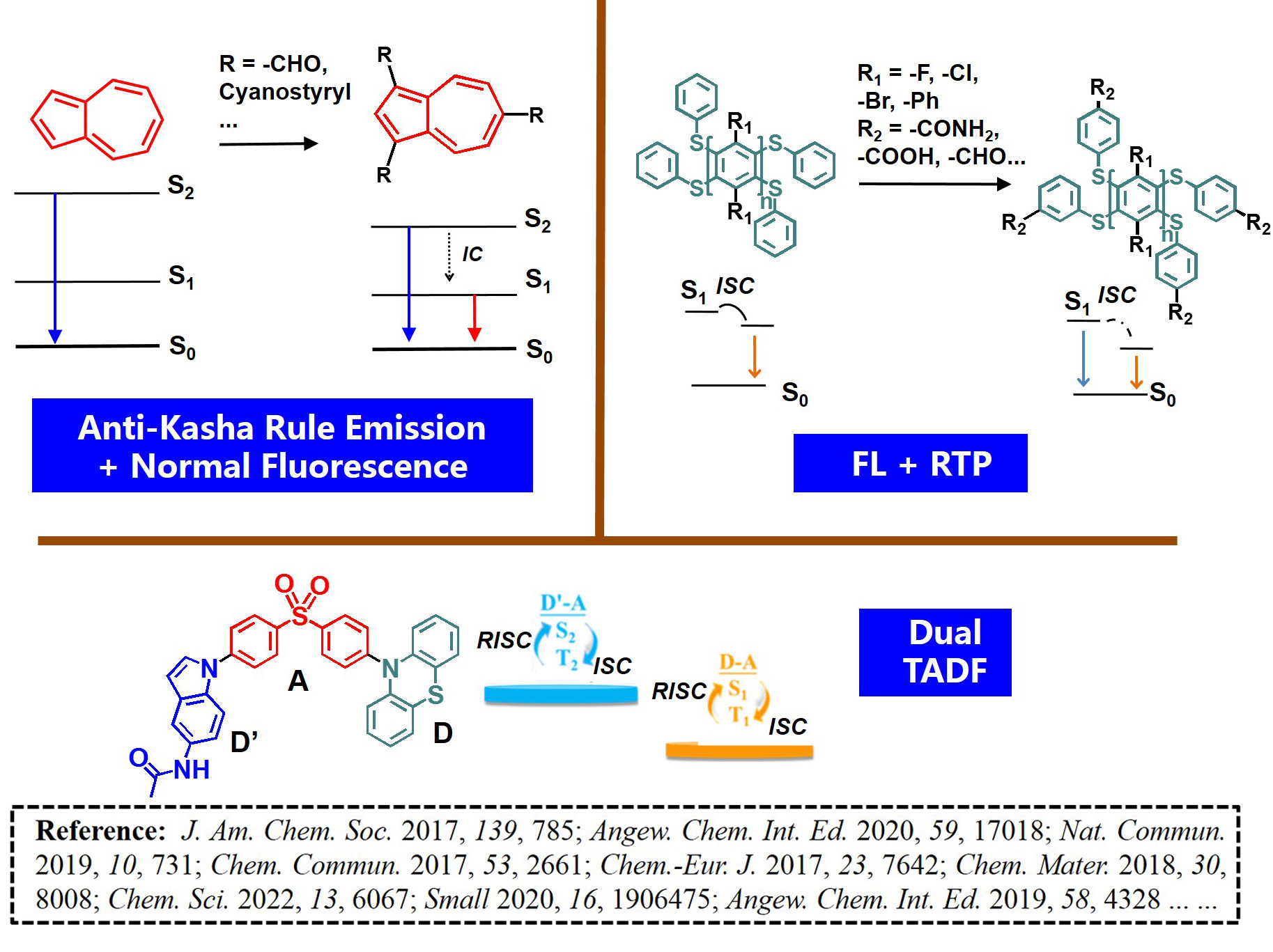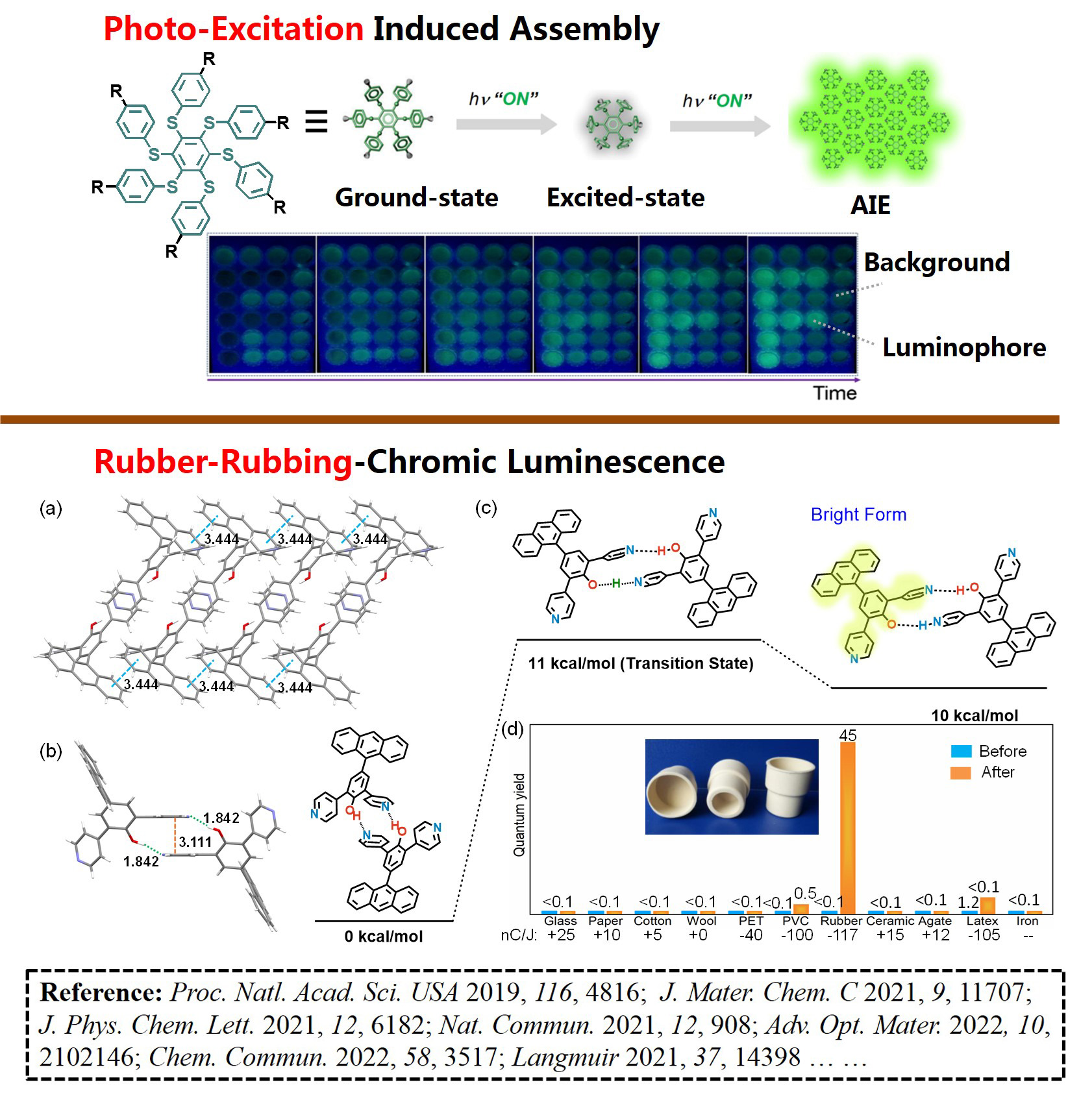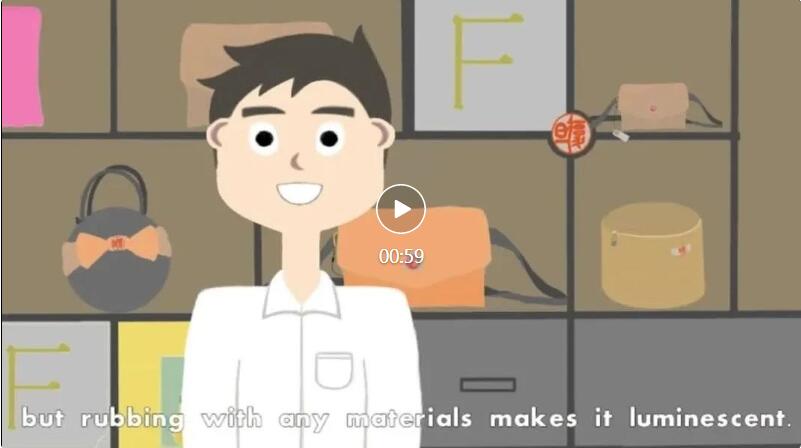Research Branches
1. Developing molecular structures and material systems out of the constraint of Kasha’s rule.
1.发展不受Kasha规则约束的可控发光材料体系。


The development of molecular structures out of the constraint of Kasha’s rule, allowing the single chromophore to produce multiple emissions, is crucial for the perfect controllability of material luminescence. We focused on the creation of new organic chromophores for the equilibrium of different excited state energy gaps. On this basis, the integration of multi-mode luminescence signals into a single chromophore can be achieved. In addition, by accurately regulating the intermolecular interactions, we can further change the luminescence intensity and ratio of the systems. These strategies avoid the emission property error caused by chromophore mixing, and provide new insights for the creation of next-generation functional materials.
发展不受Kasha规则约束的体系,让单一发色团可控地产生多波长光信号,是实现材料发光精准调控的重要途径。我们聚焦发光材料体系创新,利用平衡激发态能级差的策略开展发色团新体系设计,可在单一发色团中实现了多模式发光的信号组合。此外,通过精准调控体系分子间作用,能够进一步改变了发光强度和比率。这些策略从源头规避了发色团混制带来的发光性质误差,为新材料新功能的创制提供了新思路。
2. Novel photo- and mechano-stimuli responsive material systems.
2.新型光和力刺激响应的材料体系。



The premise of creating new intelligent dynamic materials is to reveal the new mechanism of in-situ dynamic regulation under stimuli responses. We have developed an unprecedented model with significant difference between the excited state conformation and the ground state one, and realized the molecular assembly under photoexcitation by using the intermolecular interaction of the excited state conformation. In addition, a system with rubber-rubbing responsive luminescence or luminescence color change has been developed, which reflects the unique selectivity of the stimuli response.
通过光、力精准调控体系分子间作用,揭示刺激响应下的原位动态调控新机制,进一步改变材料体系的发光性质,是打造新型智能动态材料的前提。我们开发了激发态构象与基态具有显著差异的模型,利用其激发态构象的分子间作用,实现了其在光激发条件下的分子组装。此外,还开发了具有橡胶摩擦响应发光或发光颜色改变的体系,体现了刺激响应的特种性和选择性。
3. Functional polymer complex materials.
3.功能高分子复合材料。

Through precise non-covalent bonding between luminophore and polymers, the stimuli- response function of luminophore is used to drive the synergitic movement, assembly, phase transition, and property regulation of polymers. A series of material applications (such as dynamic tracing, probing, anti-counterfeiting and information encryption) are realized in combination with the dynamic regulation of photoluminescence signals.
通过发色团与高分子间精准的非共价键合,利用发色团的刺激响应功能带动高分子的协同运动、组装、相变和性质调控,结合发光信号的动态调控实现了一系列材料应用(如动态的示踪、检测、防伪和信息加密等)。
Group Facility
- Fume Hoods & Utilities
- Balances
- Hotplates
- Vacuum Pumps
- Rotary Evaporators
- Vacuum Ovens
- Ultra-Pure Water System
- Ductless Fume Hood
- Centrifuge
- Ultrasonic Cleaner
- Fridge
- Spin Coater
- TLC Plate Cutter
- Injection Pump
- Dehumidifier
- UV-Vis Spectrometer
- Fluorophotometer
- Circular Dichroism Spectrometer
- Abbe’s refractometer
- Electrochemical Workstation
- Micro-Melting Point Apparatus
- Portable Raman Spectrometer
- Lab-Built Microscopic Imaging System
- Cell Room as well as the Related Facilities
<See more facilities in our Public Instruments Center of the Department>


